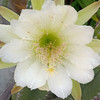Popular Trip Moments
Iceland Travel Tips 💙🇮🇸 | Skogafoss: Experience the Grandeur of Nature | A True Icelandic Forest Trail! | One of the highlights of my trip to Iceland - the power of nature is undeniable! | The charm of Iceland, where ice and fire meet. | Discover Iceland, can the aurora really awaken your heart? | Trip to the Glacier 🚗 | Iceland adventure on the Golden Circle 🛫 | Majestic Peaks and Picturesque Waterfalls | Looking for the Dragon Canyon from 'Game of Thrones' | Iceland boasts areas of natural beauty and historical significance | Unveiled Reynisfjara's Basalt Beauty and Sunset Dreams | One Thing You Must Do Early in Iceland | Iceland: A Popular Filming Location | Tropical Soul on Frozen Ground: Conquering Solheimajokull Glacier | Strokkur Geyser, Iceland's Geothermal Wonder | Iceland Majestic Gem: Skogafoss Waterfall | 17-Day Norway and Iceland Tour (Snaefellsnes Peninsula). | Immerse yourself in the slow-paced atmosphere of Northern Europe. | Have a taste at north Europe churches! | Soak in the Bliss of Iceland’s Blue Lagoon | Reynisfjara Black Sand Beach: Experience the Power of Nature | Discover the Breathtaking Wonders of Iceland | Summer at the glacier lake. | A Stunning Winter Canyon | Exploring an Interstellar Journey to a Soft Planet in Iceland! | Diamond Beach in Iceland: A Unique and Stunning Tourist Destination | The Great Geysir Geothermal Area in Iceland | Iceland's Basalt Cave: A Unique Geological Perspective, Absolutely Worth Visiting! | Iceland's Most Beautiful Geyser! But Beware of Hot Water and Steam Columns!
Popular Travel Types
Recommended Attractions at Popular Destinations
Bangkok attraction near me | Manila attraction near me | Tokyo attraction near me | Taipei attraction near me | Hong Kong attraction near me | Seoul attraction near me | Kuala Lumpur attraction near me | Los Angeles attraction near me | Shanghai attraction near me | New York attraction near me | Shenzhen attraction near me | Osaka attraction near me | Singapore attraction near me | London attraction near me | Guangzhou attraction near me | San Francisco attraction near me | Beijing attraction near me | Macau attraction near me | Bali attraction near me | Jakarta attraction near me | Paris attraction near me | Ho Chi Minh City attraction near me | Istanbul attraction near me | Phuket attraction near me | Chicago attraction near me | Seattle attraction near me | Toronto attraction near me | Orlando attraction near me | Cebu attraction near me | Chiang Mai attraction near me
Popular Attractions
Fort Santiago | Niushou Mountain | Zhuhai Chimelong Ocean Kingdom | Singapore Zoo | Bird Paradise | Tinsley Athletic Complex | Yangshan Gravestone | Wuhou Shrine | Chengdu Research Base of Giant Panda Breeding | Thiruchendur Murugan Kovil M.G.R Nagar | Shanghai Museum | Statue of Liberty | Hoi An Old Town | Ghibli Museum | Lianzhou Underground River | Liberty Square | Splendid China Miniature Scenic Area | Parc Friedel | Entasis Cocktail Bar | Wildlife park Tiergarten Braunfels | Lavoir Du Village | Cancha baloncesto en parque la estrella | Bhringeswar Devalya Shiv Mandir | Playa de Zurriola | De Brasserij | Durga Mata Temple | Angashi Mata Temple | A B S sound light vadakkencherry | Wings of Time | Oriental Pearl Radio & Television Tower
Popular Restaurants in Iceland
Seabaron | Messinn | Old Iceland | Icelandic Street Food | Café Loki | Sjavargrillid Seafood Grill | Fish Company | Mokka Kaffi | Apotek kitchen +bar | Cafe Babalu | Forrettabarinn Restaurant & Bar | Islenski barinn The Icelandic Bar | Solon Bistro | MATUR OG DRYKKUR | Jomfruin | Slippbarinn | Svarta Kaffid | Matarkjallarinn | 3 Frakkar | Prikid | Bambus Restaurant | Bæjarins Beztu Pylsur | Grillmarkadurinn | Kaffivagninn | Reykjavik Roasters | Eldur og Ís - Ice cream and crepes | Brasserie Askur | Chuck Norris Grill | The English Pub | The Lobsterhouse
Popular Ranked Lists
Top 9 Local Restaurants in Brisbane | Popular Premium Hotels in Gangavhare | Popular Luxury Hotels Near Province of Sondrio | Top 17 Local Restaurants in Bali | Popular Family-friendly Attractions Near Ganzi Prefecture | Popular Local Restaurants in Harbin | Top 6 Premium Hotels in Sikkim | Popular Family-friendly Attractions Near Manzhouli | Popular Premium Hotels in La Croix-Valmer | Popular Local Restaurants in Guangzhou | Popular Local Restaurants in Beijing | Top 10 Local Restaurants in Kota Kinabalu | Top 20 Local Restaurants in Nara | Popular Local Restaurants in Sanya | Popular Premium Hotels in Halaveli | Popular Family-friendly Attractions Near Zhangzi | Popular Premium Hotels in Minakami | Popular Luxury Hotels in Koh Kood | Popular Family-friendly Attractions Near Yifeng | Popular Family-friendly Attractions Near Mingxi | Top 17 Local Restaurants in Tokyo | Popular Family-friendly Attractions Near Rong County | Popular Premium Hotels in Beetsterzwaag | Popular Premium Hotels in Durensewu | Popular Family-friendly Attractions Near Mengcun | Popular Family-friendly Attractions Near Nenjiang | Top 19 Local Restaurants in Shenzhen | Top 15 Local Restaurants in Langkawi | Top 20 Local Restaurants in Tianjin
Payment Methods
Our Partners
Copyright © 2024 Trip.com Travel Singapore Pte. Ltd. All rights reserved
Site Operator: Trip.com Travel Singapore Pte. Ltd.
Site Operator: Trip.com Travel Singapore Pte. Ltd.












